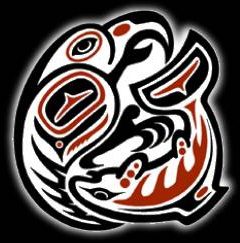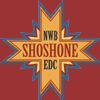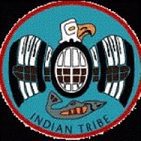The Tribe operates the Jamestown Family Health Clinic in the City of Sequim to provide primary health care services to Tribal citizens and non tribal community members seeking quality care. Tribal citizens are the priority population for services and are encouraged to receive services through the Clinic.
Each of the medical providers has a unique area of interest and expertise. The Obstetric and Gynecology Department provides Women’s Health Care and care for pregnant women. As a group they provide the following services:
Preventive care for all ages: newborns, children adolescents and adults
Geriatric care: including care in nursing homes or assisted living settings
Disease management for chronic medical conditions
Procedures: cardiac stress testing, casting, gynecology, and minor surgery
Obstetric care for pregnant women (OB/GYN Department only)
Family Planning and Hospital care at Olympic Medical Center in Port Angeles
The Clinic is affiliated with the University of Washington’s Department of Family Medicine. The clinic serves as a rural training center for physicians from the University’s Family Medicine Residency Program. They help maintain the quality of care that the clinic staff and physicians provide in Sequim. Participation in the teaching program provides the staff with a satisfying teaching role. It also provides ongoing educational opportunities and on-line resources invaluable to the medical practice.
The Jamestown Family Dental Clinic is open to patients of all ages. With an incredible view of Sequim Bay, the office is located in Blyn, in the lower level of the Tribal Community Center Building. We serve Tribal citizens, Tribal employees and members of the local community who seek quality dental care.
Two dentists are joined by a staff of 5 assistants and 2 hygienists. The experience and training of the three dentists make possible a wide array of dental services, from basic care (cleaning, X-rays, fillings) to a variety of dental procedures including, endodontics (root canals), prosthodontics (crowns, bridges, partials and dentures), oral surgery including implants.
Community Health & Wellness for Tribal Citizens
Health Education and Prevention services are provided by the Community Health Staff who include a Community Health Nurse (CHN), a Community Health Representative (CHR) and a Health Educator. Together they provide and coordinate a number of health services that include health screenings, infectious disease education and prevention, chronic disease management, safety education and planning, and injury prevention.
Top priority wellness issues include increasing healthy eating habits, increasing physical activity and decreasing tobacco use. Community Health staff design Tribal programs to address these issues and to provide support for citizens working to improve their health. Health interactions may be provided on an individual basis or in a group event and occur in a variety of settings such including the Tribal Community Center, Tribal Health offices, the Jamestown Family Health Clinic, or during a visit to the home of a Tribal citizen.
The Jamestown Klallam Tribe has evolved directly and without a break from several constituent communities of the S’Klallam Tribe. The S’Klallam Tribe (meaning “strong people”), as a Salish cultural and linguistic group, were related to the Sook and other tribes of British Columbia, but also to most of the tribes of the Puget Sound area. The Klallam Tribe was a clearly defined social and cultural unit, whose component villages were closely linked by intermarriage and other cooperative social ties. This tribe, first contacted in 1790, was signatory to the Point No Point Treaty with the US in 1855. Jamestown received services and was dealt with by the Federal government as a distinct community by other Klallam groups and other Washington Indians. In the 1970’s, the mood of the Jamestown Tribal membership changed as it saw that fishing and hunting rights were denied them due to the lack of federal recognition. Because of overall economic conditions, the membership also became aware of the difficulty in providing for health and educational care. The Tribe soon realized that only through Federal recognition would they be able to provide for these basic needs. This effort began around 1974 and was established after a long struggle on February 10, 1981. It also remained distinct from other Klallams as well as from non-Indians despite its character as a “progressive” Indian community whose members sought education and aggressively integrated into the non-Indian community and its economy. A major factor in the stability and continuity of the Tribe was the land base purchased when it was formed in 1874. This land provided the economic foundation for a prosperous Indian community and a geographical center for the group is still owned by the community members today. In 1981, the Tribe began operations with a full-time staff of two individuals and only two grant-funded programs. Since 1988, the Tribe has been involved in a national Self-Governance Demonstration Project which allows the Tribe more autonomy and control over Bureau of Indian Affairs funding. The Project has resulted in the Tribe being able to provide more Tribally-specific programs, services, and activities to better meet the needs of the membership and helps to maintain the government-to-government relation between the Tribe and the United States.
The Jamestown S’Klallam Tribal community is located on the northern Olympic Peninsula of Washington State, approximately 70 miles northwest of the city of Seattle.
The Peninsula is a distinct and somewhat isolated geographic region, as it is separated from the Seattle urban area by two bodies of water, one of which must be crossed by ferry. Two counties comprise the bulk of the Olympic Peninsula land area, Clallam County and Jefferson County. The Peninsula is bounded by the Pacific Ocean to the west, the Strait of Juan de Fuca to the north, and on the east by Hood Canal. A large part of the two counties is densely timbered wilderness or undeveloped area, and is characterized by rugged mountains, steep slopes and rain forests.
The Jamestown S’Klallam Tribe was formalized by members of S’Klallam communities along the eastern end of the Strait of Juan de Fuca in 1874 when, faced with the threat of forced relocation by white settlers, a group purchased a tract of 210 acres (0.85 km2) and established a community near Dungeness named “Jamestown” in honor of village leader James Balch. This was a notable feat, since at the time Native people were legally barred from buying property. Despite periodic pressures to relocate to reservations, and without the Federal financial assistance that such relocation would have enabled, the Jamestown band maintained its independent community, and developed a viable economic base.
A century later, after a six-year effort to receive official recognition as a tribe, the United States Department of the Interior granted them such recognition on February 10, 1981. The Jamestown S’Klallam Indian Reservation, at 48°01′39″N 122°59′57″W, is very small in area, comprising 0.145 km (13.49 acres) of land area on and near Sequim Bay along U.S. Route 101 in the community of Blyn, in extreme eastern Clallam County at the southwest corner of the Miller Peninsula.
The S’Klallam language (called Clallam or Klallam) belongs to the Salishan family of Native American languages. The word S’Klallam means “the strong people.”
The reservation is the location of the tribal government administration, not a residential area. It includes the Jamestown S’Klallam Tribal Center (location of the tribe’s administration, natural resources, social and community services departments as well as the Tribal Library and Jamestown Family Dental Clinic), the Tribe’s Seven Cedars Casino, and the Longhouse Market, Deli and Fueling Station.
In addition to the small parcel of reservation land, the Tribe also owns more than 1,000 acres of land in Clallam and Jefferson Counties. That land includes Railroad Bridge Park and The Cedars at Dungeness Golf Course in Sequim, and Tamanowas Rock, a sacred S’Klallam site in Chimacum.
The community is governed by a democratically-elected tribal council. The Tribe is governed by the five-member Jamestown S’Klallam Tribal Council. Council members are elected on a staggered basis by the registered adult tribal members for two-year terms. The council acts in accordance with the Jamestown S’Klallam Tribal Constitution. As of 2012, the tribe had 594 enrolled citizens, and provided services to almost 640 Indians in the northeast Olympic Peninsula.
City: Sequim, population 3,277. Elevation 290.
County: Clallam
Clallam County’s assessed value averages $1,554 per acre.
Rainfall (data for Port Angeles) 24.6 (actual rain probably a few inches less), temperatures 45-72. Annual precipitation varies widely on the Peninsula, with over 100 inches in the west end, and only 17 inches in the Sequim area.
Principal industries: wood products, agriculture, tourism.
Tribal Property: Reservation 13.5 Acres
Trust 103.0 Acres
Fee 933.0 Acres
Total: 1049.5 Acres
Tribal website: https://jamestowntribe.org/
Administration Phone: (360)-683-1109
Clinic website: https://jamestownhealth.org/
Clinic Phone: (360)-683-5900
Jamestown S’Klallam Tribe
Jamestown Family Health Clinic
808 North 5th Ave.,
Sequim, WA 98382
Phone: 360-683-5900
Fax: 360-582-4800
Webpage: http://www.jamestowntribe.org
Clinic Hours:
Monday – Friday, 8:00 a.m. to 5:00 p.m.
Saturday, 10:00 a.m. to 3:00 p.m.
Olympic Medical Center Lab Hours only:
(Located in the Jamestown Health Clinic)
Monday – Friday, 7:30 a.m. to 5:00 p.m. No Lab services on weekends.
Jamestown Dental Clinic – Tribal Campus
1033 Old Blyn Hwy
Sequim, WA 98382
Phone:360-681-3400
Fax: 360-681-3401
Member Tribes










































